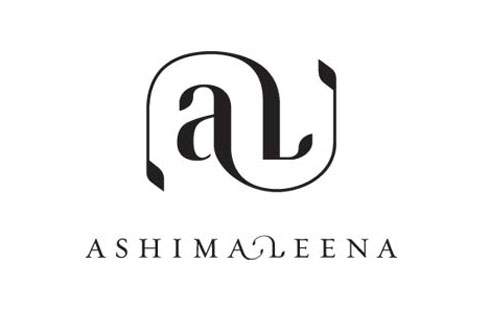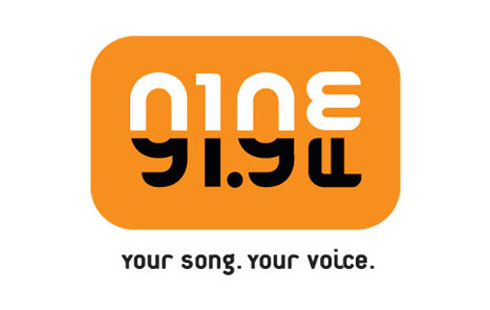Itu Chaudhuri Design
Posted in: UncategorizedItu Chaudhuri has practiced design since 1984, when he first began to tack the word “design” after his name on his letterhead. In 1996, on his accountant’s advice, he incorporated a company under the same name, thus perpetuating that unfortunate decision. Itu Chaudhuri Design (ICD) specialises in helping clients’ businesses through design, seeking out those who believe that design can make a difference to a result, whether economic or social, and are willing to approach their project in this way.
Why are you a Graphic Designer?
I loved to draw letters and sometimes, spaces or buildings and weird inventions, a bit like a daft boy Leonardo (da Vinci, not DiCaprio). I never saw, and still don’t truly see, different kinds of design. Architecture seemed most challenging, so I chose to study it after school. To get in, you had to give an entrance exam, which meant I could, quite respectably, hide my indifferent school performance; that was nice, too.
Today. I think differently. I’d like to be a designer first, with graphic secondary. I’d like Design to be written into the strategic script at an earlier point than it is—an execution tool, rather like a pencil. How much better if we could be aprt of the mind that moves the arm that moves the pencil! If this makes sense…
Did you attend school for fine art or design?
How did you make the transition from SPA (School of Planning and Architecture, New Delhi) to graphic design?
No art or design school. I’m a fraud! One of my first hires, a really bright NID-trained designer, seriously suggested to me that graphic designers should be licensed to practice. Looking back on our work then, you could say he had a point; luckily, he left us soon and I could breathe freely.
Aurobind Patel, the amazing publication designer and typographer (he redesigned India Today in the early 80s, and The Economist in the 1990s) encouraged me to make a shift, to marry rather than flirt around. Aurobind practices what you might call a zen method, teaching, by not teaching; showing how to learn. Here’s how it worked. He’d open a spread of say, Muller-Brockman’s Grid Systems. He’d wait till I was hooked (usually 60 seconds). Then he’d lend it to me and a few meetings later, maybe after a month, I’d come back to return it. “I’ve been reading it all month,” i’d offer. “That should do it,” he’d reply. Afterwards, we might make a photostat of some lettering from another book in his fantastic collection, and pin it up on his softboard. “Gorgeous, just look at that!” he’d gush. Then he’d roll a joint and buy me lunch, while he smoked. Can it get better?
Did you ever work in anther design studio? Or did you start on your own?
On my own, every day of my life. I wish it hadn’t been so, though.
Unfortunately, the design scene in 1984 was very different from today. I’m only stating a fact when I say I have never had the sort of opportunity we offer young designers today. Around 1992, Sujatha Kesavan kindly offered me a job at the newly formed Ray & Keshavan, but the wages weren’t too good (Rs 3800, or about Rs 10,000 in today’s money).
You have a distinct style of Design. How long did it take you to develop your style?
I don’t think we have a distinct style at all. In any case, a lot of designers have contributed to it with their own strengths, not me alone. And every passing year, it’s less and less of me. We like to think we try to develop a language for every problem, rather than approach it with a style of our own. A way of thinking, yes; style, hopefully; but “a” style, well, that’s not out way.
Were there any particular role models for you when you grew up?
Aurobind Patel should have been the one if I’d specialised in typography, but once I realised I didn’t want to, I guess he’s been a mentor rather than a role model. I hope he agrees. In any case, we can’t all live in the stratosphere, what with the air being so thin and all.
Who was the most influential personality on your career in graphic design? Any other Indian graphic designers who you admire?
Whatever I’ve learnt—and nearly all my human influence, outside books—is from designers I’ve been lucky to work with. There’s Rajesh Dahiya, and Lisa Rath (now my partner for some years). Also Ankur Choksi, Aditya Pande, Dev Kabir Malik. All amazing designers, at the very top of the profession. There’s also Milan Moudgill (brielfy), Sudeep Mazumdar, a great talent. All these have been unequal exchanges; I certainly got the better of the bargain.
Lotus (Ambrish Arora, Ankur, Siddharth Talwar and co) are a consistently brilliant interior design firm we work with occasionally and admire all the time. Akila Seshasayee teaches me a lot for sure, but what exactly? Adam Kallish, a Chicago designer, is my thinking teacher, via imaginary conversations, and a real one every year or two. Ram Sinam at trapeze, now here’s someone to admire.
Most clients teach you something; some a great deal. Pankaj Agarwal at Haldiram’s taught me all I know about packaging. Sandipan Deb and Rajesh Jha at Open magazine, recently. Ashish Rajpal, at idiscoveri, an ex-client, was best of all, messianic and mentoring; Tarun Chandna and Gaurav Saklani, at Inme and Exper, are guys every business should meet if it employs people. Among quasi-clients: Omkar Goswami, economist; Mukul Kesavan, writer (always provocative, sometimes eye-opening views on design or anything else).
Santosh Sood, (ex Lowe/Rediff) works with us on branding and advises on everyhting; with his very individual mix of extreme smarts and sageness, will perhaps overtake the influence of everyone in the preceding paragraphs. Rahul Dewan, (Srijan Technologies) is a mentor everyone should have.
My father, Sankho, sculptor and mother Ira, studio potter. My father’s abstract work gives me faith that pure form, for its own sake, without represenational meaning, has great power, as surely as any work by Paul Rand does. My mother’s work reminds me that surface decoration is not mindless.
Was there any time when you wanted to quit graphic design?
Why wait, there’s no time like the present! This is a regular feeling, and visits me every single day. There’s a desire to do something better, practice design in a larger and more meaningful way. Perhaps the lack of achievement in the existing practice holds one back from starting something new. To burn bridges, you must build them first.
What advice do you have for aspiring creative professionals? Would you advise them to take on graphic design as a career option?
Yes, a passionate yes. From the end (I think) of James Joyce’s great novel, Ulysses:
I put my arms around him yes and drew him down to me so he could feel my breasts all perfume yes and his heart was going like mad and yes I said yes I will Yes.
Do you think Clients are opening up to keeping aside a decent respectable budget for design work? Do you think clients are understanding that they need to invest in Design as a communication tool and also to cut the clutter, and that good design comes at a price?
Varies greatly—-fortunately.
But I now think that it’s time for designers to stop complaining and thinking of clients as “them”—-I have. Correct thinking will lead you into the middle of the “mess”, or that part of the problem which matters most, and where value lies–to the client, or his customer or society. This value has to be communicated, and the rewards will come from the person or group to whom benefit flows—this could be the client or his clients. If you can’t say what it is, or don’t know yourself, then it’s back to the drawing board. And If there is no person or group who benefits, then why do it? I feel this is the key to thinking through design.
So a failure to get a ‘decent budget’ is, in this way of thinking, a failure to uncover that value, or a lack of imagination. This is an uncompromising view, where tangling with business and society, and uncovering the “mess” become a part of practicing design. Here’s Adam Kallish: “bringing clients, markets and design together is a strategic act.” (something like that).
Are you hiring? ![]()
Yes, we’re recruiting clients! Any client who has the right idea is welcome to join us in solving problems or finding opportunities. We offer poor pay, long hours!
Yes, designers too. Always open for good people, seniors and juniors. We look for open-minded, curious people above all, intelligent in one way or another. Good pay, good hours.
Mac or PC?
Mac for me. But to quote a famous New Yorker cartoon.”On the internet, no one knows you’re really a dog.”
Who would you like to take out for dinner?
Vidya Balan. Ideally, for chai; dinner is too intimidating. Can you help?
What’s on your iPod?
Nothing. It’s iTunes I depend on; no iPod. I use a MacBook Pro, which has some of my music, and goes everywhere with me. I listen to music a lot, very seriously, but never when I walk or jog. At work, I simply connect desktop speakers; at home, I stream wirelessly from the MacBook. An external hard disk stores uncompressed music. The stream goes to a conventional stereo with amp and two speakers (2.0, not a 5.1 home theatre). The only truly mobile listening I do is in my car, which accepts USB input, and a little flash drive does the job. To carry ALL your music ALL the time is… I’d better shut up.
Hindustani classical, Jazz, Hindi film classics, Western classical is the order (70-10-10-10).





Post a Comment